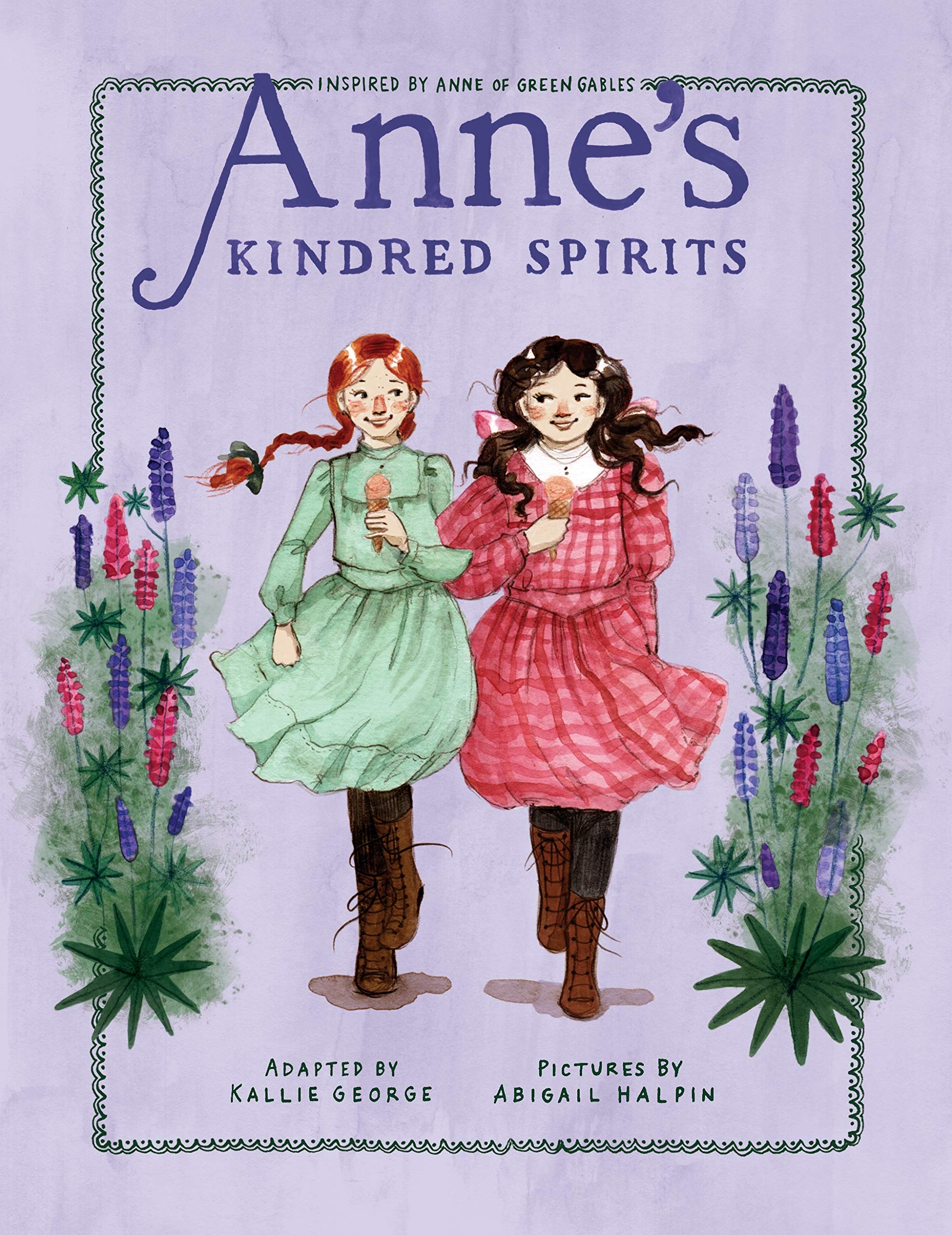Picture a starry-eyed eleven year old girl with an extraordinary imagination that knows no bounds. An ill-fitted and yellowish dress clings onto her thin frame while a faded brown sailor hat rests on her head— but don’t let her appearance deceive you. She’s a lively soul filled with relentless enthusiasm and optimism, even when deep within the “depths of despair”. She’s creative, she’s witty, she’s cheerful, she’s curious, she’s an unstoppable feminist and hopeless romantic who insists on spelling her name with an E at the end simply because it “looks so much nicer” that way. Her two braids of hair are a violent shade of red, but utter a word about it and the abundance of freckles littered over her face and she might just lose her temper. She spends days with her little head in the clouds, living more in her idyllic dreamland than out in the real world. She is constantly searching for “kindred spirits”, struggling to comprehend geometry, and cleaning up after her mistakes. She gives fantastical names to pretty places, listens to the trees as they whisper stories in the wind, and speaks faster than lightning with bold, colourful words so much bigger than she is. She is but a little orphan girl who finally finds home in Green Gables.
Have you heard of Anne Shirley? Well, now you have.
Lucy Maud Montgomery’s beloved classic 1908 novel set in the mesmerising land of Prince Edward Island, Anne of Green Gables, features Anne Shirley as the lovable heroine. It is a delightful tale that has stood the test of time. To children it unveils a world of never-ending possibilities and wonder, and to older generations it’s a breath of fresh air and nostalgia. It is a heartfelt and whimsical story of imagination, optimism, growing up, family, friendship, and ultimately— love. Anyone can find themselves lost in this charming book, whisked away into the dazzling land of Avonlea and cast under the magical spell of Anne and Lucy Maud Montgomery herself.
Anne of Green Gables begins with Anne Shirley, a high-spirited yet previously unloved orphan girl who arrives at Avonlea, a town on Prince Edward Island, Canada. Starstruck by the sheer beauty of the paradise before her, Anne is overjoyed to finally call a place (a gorgeous one at that) home. However, her dreams soon crumble to dust when she discovers she was sent to elderly Marilla and Mathew Cuthbert — a pair of unmarried siblings living in the cosy white farmhouse called Green Gables — by mistake. They had originally wanted to adopt a boy to help Matthew in the farm, not a talkative and expressive redheaded girl with enormous dreams and a broad imagination.
The keyword being: originally. After all, it doesn’t take too long for Anne to win over all their hearts, and for her to find home in not only Green Gables, but the people surrounding her.
Despite the overflowing love Anne receives as she grows up in Avonlea, things don’t always go according to her daydreams. The whole book follows Anne as she confronts trials and tribulations on her journey from a fiery little girl to a determined young woman. Along the way, Anne often finds herself in many misadventures. From falling off a roof and dyeing her hair green to accidentally intoxicating her best friend, Lucy Maud Montgomery makes it clear that our favourite redhead is by no means perfect. Anne may be positive and energetic, but she has flaws that only make her an even greater joy to read about. While she does inevitably slip up here and there, she learns from her mistakes and never repeats them, just as she promises Marilla early on into her new life in Green Gables. Her realistic yet hopeful adventures reassure young readers that it’s normal to have a rough start and a few bumps on the road, because it will all work out in the end. With that it comes as no surprise that Anne has earned her spot as one of the most easy-to-love and inspiring literary characters of all time.
So, what exactly does it take to write a story so beloved that it lives on for over 100 years, and so well known that it gets turned into movies, television shows, musicals, radio dramas, and even Japanese anime?
Lucy Maud Montgomery could probably tell you a thing or two about it.
For one, it takes heart. It’s hard to ignore all the many aspects of Anne of Green Gables that overlap with bits and pieces of Montgomery’s own life and experiences. To start: like the fictional Anne, Montgomery grew up in Prince Edward Island, Canada’s smallest province. Here, it is no wonder how she is able to describe the sceneries of Avonlea with bright and vivid descriptions, painting a breathtaking scenery of the land and presenting it in stunning imagery. Furthermore, Montgomery shares another parallel with Anne— the former having been practically an orphan as her mother died when Montgomery was just born, her father leaving her in the care of her strict grandparents. With a feeling of loneliness and abandonment constantly hanging over her head, she chose to spend her early years indulging in her wide imagination and creativity in order to cope. Sounds just like Anne Shirley, don’t you think?
But the similarities don’t end there. Whether intentional or not, Montgomery seemed to share countless other traits with Anne. Montgomery never conformed to social expectations or gave up on her dreams in life. In spite of the cultural norms in the late 1800s and early 1900s in which women did not go to college and could not be published authors, she was certain of her goals and strived to accomplish them. She was independent, strong, and her will was unwavering. Anne, too, follows right after her footsteps as she grows to become a college student, then a teacher and a writer.
As for the whole inspiration to write Anne of Green Gables, it also referred to an event in Montgomery’s own life. More specifically when her distant cousins wanted to adopt an orphan boy but were mistakenly sent a girl instead in the year 1892. Just like how Montgomery’s cousins eventually ended up keeping the girl, the same happens in the story of Anne Shirley as the Cuthberts decide to keep her. Not to mention, the famous Green Gables house drew inspiration from the house of the aforementioned cousins.
Throughout her life, Montgomery accomplished many things. She published 22 novels (including Anne of Green Gables) alongside over 500 short stories, countless poems, journal entries, and essays. Following the success of Anne of Green Gables all over the world, Montgomery was named an officer of the Order of the British Empire in 1935. Besides that, she was the first Canadian woman to be part of the British Royal Society of Arts and was declared as Canada’s Person of National Historic Significance. The actual house of Green Gables in Cavendish, Prince Edward Island was also recognised as a National Historic Site in Canada. It is still very much alive to this day, with people travelling thousands of miles just to visit and further connect with the beloved classic.
But alas, all stories must come to an end. Lucy Maud Montgomery passed on April 24, 1943 at the age of 67. And while she is no longer here with us today, there is no denying that Montgomery has left a profound impact on not only children’s novels, but literature as a whole too. As one of the world’s most prolific authors and as a resilient, imaginative woman, Montgomery has touched the lives of young children all across the globe while giving the older generation a beautiful reminder of the wonders of imagination.
And though life is fleeting and stories must draw to a close, Lucy Maud Montgomery’s legacy will always live on. Both within our darling Anne Shirley, and in between the lines of the timeless classic: Anne of Green Gables.
By Tara Fukagawa
















